Croatian Tourism Provides Desperately Needed Cash Injection for Economy
December the 3rd, 2021 - The Croatian tourism sector has provided a very, very welcome cash injection to the domestic economy following this summer's remarkably successful season. It couldn't have come soon enough.
As Poslovni Dnevnik/Radmila Kovacevic/VL writes, 2021's summer tourist season was above all expectations. While summer might well be over now, Croatian tourism for this year is not over yet. About 13,000 guests are currently staying in the country, among them certainly some digital nomads, who additionally marked the unexpectedly successful 2021 for Croatian tourism and the economy as a whole.
All of this is, of course, in the shadow of the ongoing coronavirus pandemic, but the issues caused by that were far less problematic than we feared before the arrival of the summer months and almost negligible in relation to the damage suffered by some other countries in the rest of the Mediterranean, ie Croatia's competition.
Let's just mention the southern European tourist superpower, Spain, which before the pandemic hosted up to 48 million tourists a year, this year in the first eight months had to settle for a meager 30 percent of the traffic they enjoyed back in 2019. Croatia, on the other hand, concludes the eleven-month period of 2021 with 13.5 million guests who spent 83.5 million nights in the country. All of this is primarily thanks to an exceptionally favourable epidemiological picture which lasted and lasted. That has now, of course, changed quite a lot.
From the beginning of the year to November the 29th, Croatian tourism managed to ''grab'' 67 percent of arrivals from the best tourist year ever, 2019, and measured by overnight stays, things were even better - the country reached as many as 77 percent of those recorded back in pre-pandemic, record 2019. It should also be noted that some destinations across the country in the peak summer weeks even surpassed the traffic from that record year.
Croatian tourists with 2.2 million arrivals were second, following the Germans, and with 12 million overnight stays, they reached 89 percent of the results from 2019. Slovenians and Austrians with 1.1 million arrivals share third place, and the Poles, with a million arrivals, set new records. Tourist successes are unfortunately not evenly distributed along the coast. The season was simpler and more successful for places and regions accessible by car, while air destinations in the south such as Dubrovnik still struggled with minuses in air traffic, and then with a greater shortage of guests.
However, it turned out that the tourists who managed to arrive in Croatia during the coronavirus pandemic remained on holiday for a few days longer than they typically did before, and they filled the best and most expensive Croatian Adriatic accommodation without any real problems. This was the cass even with higher prices than last year, which is a luxury that some hotels could afford thanks to good demand. This was made all the easier because some wealthy tourists, who used to choose either exotic destinations in Asia or Central America, or, if they wanted to stay in Europe - Tuscany, Provence, South Tyrol zbog, finally discovered the Croatian coast this summer, primarily heading to beautiful Istria.
However, Croatian hosts from the north to the south of the country were convinced that quality and safety are much more important to guests during the pandemic than pricing. We will have to wait a few more months for the data on foreign exchange earnings from tourism to see whether or not that's true, but it was already clear in the first half of the summer from the fiscalised receipts and invoices issued that we've had some generous guests visiting in 2021.
Minister of Finance Zdravko Maric announced on August the 1st that with the last day of July, the value of all purchased goods and services across Croatia since the beginning of the year exceeded that of the first seven months of the record year of 2019. August was even better, with 93 percent of the overnight stays from back in 2019 realised, which is especially important because in that month, the country's hosts achieved practically the highest prices of the entire year. The value of fiscalised invoices in Croatian tourism's economic activities during the month of August exceeded the amount from August 2019 by 21 percent.
At the annual level, their value at that time was almost 18 billion kuna (84 percent of the results from 2019). It gives all the right to those who expect that foreign exchange tourist revenues this year may exceed the figure of eight billion euros.
In the record-breaking year of 2019, that figure stood at ten billion, and in the first pandemic tourist season of 2020, less than five. Whatever the final data for 2021 turns out to be, it is clear that Croatian tourism this year provided a welcome and handsome injection into the Croatian economy. That was undoubtedly more necessary than ever given the unprecedented situation with the global pandemic.
For more, check out our dedicated business section.
Banja Luka, Tuzla Have Flights, So Why No Flights to Osijek?
December 3, 2021 - The TCN inbox is currently as interesting as it has ever been. As we start to focus a little more on Slavonia, one obvious question is why there are almost no flights to Osijek, when nearby airports such as Tuzla and Banja Luka offer routes to several countries?
As I get older, I get a little smarter, and life gets just a little easier.
We are working on a few initiatives at the moment - the TCN Split Winter Tourism Round Table on December 13, the new Vukovar Card concept, and a general mission to tell the world how amazing and full of life Slavonia and the rest of eastern Croatia is. Because it really is. Time to Tell the Truth about Slavonia Full of Life.
All three initiatives have generated traffic in the TCN inbox, and the bit where I am now smarter is that I am inviting people with contributions to make on Split winter tourism, developing tourism in Slavonia, and promoting the Vukovar Card concept to contact me and explain how they can help.
The contributions have been beyond magnificent.
One such contribution came recently in the form of a Croatian aviation expert who wishes to be anonymous at this point. He has given me some really useful information on the Splilt winter flights scene and possibilities. He has also been very generous with his time, so I decided to extend my line of questioning to talk about Slavonia.
For all the talk of investing and rebuilding eastern Croatia after the war, the results have been lamentable, and it is clear that funds have been prioritised elswhere in Croatia, where lobbies and private interests are stronger. It is a subject I plan to explore in some detail in 2022, but for now, I focused on something I was keen to understand - the questions and answers are below in full.
Osijek. Why do budget airlines there fail when Tuzla and Banja Luka succeed?
Firstly, what, and how are you defining success? Tuzla and Banja Luka are two different animals.
Tuzla paid vast sums to Wizzair to establish a base there and over time has developed the airport through its low fares, mostly taking passengers away from Sarajevo. Banja Luka is a dog, with the government there paying all of the costs for airlines to fly there so it can’t be considered as a success in any light. Its very similar to what the Serbia government does with Niš airport and more recently this new ex air force base airport in Serbia, I’ve forgotten the name of it.
Osijek has not seen any major investment since the airport opened after the war. I’ve seen countless management team efforts eager to attract flights to Osijek and they have always been open to any suggestions for assistance. The main problem is they lack any financial power to provide subsidies and the local government doesn’t have the purse strings to help either. The national government and Croatian National Tourist Board focus are Zagreb and the coast as it’s always been. On top of that, they need to learn how to make business cases for airlines to launch potential routes and have an in-depth knowledge of its economy in Slavonia. They don’t have any of this and thus no idea of what their potential business and leisure markets could be. I understand there is a diaspora link with Mostar, Dalmatia, Austria, Germany, Hungary, and Ireland. The Hungarian government launched a PSO program that Wizzair won to operate flights between Osijek and Budapest in the past. I’m not sure if it still operates as it was of limited nature.
As we know, Ryanair only sticks around as long as its payments are coming in, once they stop then the airline goes elsewhere. Yes Eurowings is another airline that attempted to make Osijek work but failed. The biggest problem I see is that Osijek somehow manages to raise money for subsidies but not to continue marketing the route at the destination. Too seldom airports and the Croatian National Tourist Board in Croatia assume the airline will carry on with marketing the route when services are launched, but in reality the airlines have limited resources to market a route as the Croatian National Tourist Board should be doing.
I think Osijek has a huge potential as a cheap and undiscovered city break gem, with the additional traffic from the diaspora.
Thoughts?
A few years back I visited Osijek for a weekend city break, and I was surprised when I went for breakfast and found the restaurant full of elderly tourists from the UK. At the time I knew there were no direct flights operating from Osijek and the UK which means they travelled via Zagreb. Slavonia has trouble marketing itself and the Croatian National Tourist Board does little to assist, so they are left to fend for themselves.
Considering the number of wineries in the area, it’s amazing that this is not marketed to potential tourists. But then none of the wineries in Croatia are adequately marketed to tourists in the first place. I’m originally from Australia and in Australia and internationally our wineries and winery trails are known throughout Australia and internationally. OK, Australia has a large export market for its wines, but you have the wine industry working together with Tourism Australia to promote their products in those markets, thus attracting tourists to the wine regions.
The Croatian National Tourist Board should be winding down their subsidies towards the cruise industry, and package holiday organisers aimed at the coast during the summer period. Millions of euros are spent on this annually and should be focused more on other regions of Croatia like Slavonia, or even mandate that any subsidies on the coast should also include operations in Slavonia. It’s been a while since I was last in Osijek so I’m not up to date on how much the infrastructure for tourism has progressed there. This could be a limiting factor along with the limited amount of corporate travel.
If you are interested in working with TCN and have some knowledge or expertise to contribute to the Split winter tourism, Vukovar Card, or Make Osijek Great Again (MOGA) initiatives, please contact This email address is being protected from spambots. You need JavaScript enabled to view it. Subject (choose one) Split Winter Tourism/Vukovar Card/MOGA I am particularly keen to talk to someone who has good information and the financials on annual subsidies to airlines and other forms of transport.
Ryanair Zagreb Flights to Basel, Eindhoven, Paphos Officially Launch Today
December 3, 2021 - Ryanair Zagreb flights to Basel, Eindhoven, and Paphos are officially taking off today!
Ryanair operates on three more new routes from Zagreb Airport to three new airports in the Netherlands, Switzerland, and Cyprus - Paphos, Eindhoven, and Basel, reports Croatian Aviation.
Zagreb - Basel - Zagreb
Ryanair connects Zagreb and Basel twice a week. Basel Airport is located in France, but an extraterritorial route connects it to the city. Basel is the second-largest city in Switzerland, with approximately 170,000 inhabitants. In addition, a relatively large number of emigrated Croatian citizens live in Basel and the wider region, and an even more significant number of diasporas from Serbia, BiH, and Kosovo.
Zagreb 13:45 - 15:15 Basel 15:40 - 17:10 Zagreb
The Irish low-cost airline will operate on this route twice a week, on Mondays and Fridays, in the afternoon, with A320 aircraft. However, it should be noted that Basel is not a big hub for Ryanair; most of the traffic at this airport is generated by the British EasyJet.
Zagreb - Eindhoven - Zagreb
Zagreb Airport is also connected to Eindhoven, the fifth-largest city in the Netherlands, with around 400,000 inhabitants in its urban area. The airport is located very close to the border with Belgium, and due to its location, these flights are used by passengers who continue to Essen, Dortmund, Cologne, or Dusseldorf.
Eindhoven is a large base of Ryanair and Hungarian Wizz Air and Transavia. Transavia operates from Eindhoven to coastal airports in the summer, while there are no scheduled flights in the winter.
Zagreb 17:35 - 19:30 Eindhoven 19:55 - Zagreb 21:50
Ryanair will also use A320 aircraft from the Zagreb base on this route and operate in the afternoon and evening. It is expected that Ryanair will record good results on this line, and ticket prices are currently very affordable.
Zagreb - Paphos - Zagreb
This morning, the third new line took off for Paphos at 6:40 am, connecting Zagreb and Cyprus twice a week, on Mondays and Fridays.
Zagreb 06:40 - 10:35 Paphos 11:00 -12: 55 Zagreb
This line is primarily oriented to Zagreb tourists who travel to Cyprus for a short weekend vacation or longer, especially in the summer months. There have been no regular flights between Cyprus and Zagreb, and traffic at Paphos Airport is mainly due to Ryanair flights.
In addition to these three new lines, new lines to Thessaloniki, Dublin, Manchester, and Malaga also started this week.
For more on flights to Croatia and other travel announcements, make sure to check out our dedicated travel section.
Ironman is Coming to Croatia: Plava Laguna to Host 70.3 Triathlon in Poreč
December 3, 2021 - After cooperating with the Ironman group in 2019 and two Plava Laguna 5150 Poreč Triathlons from the Ironman competitions, Plava Laguna will organize the 70.3 triathlon in Poreč next year, one of the world's most prestigious competitions in this sport.
Plava Laguna IRONMAN® 70.3® in Poreč will be held on October 16, 2022. A few days before, from October 13, Poreč will live in the spirit of the triathlon, and the day before the Ironman 70.3 competition, on Saturday, October 15, there will be an IronKids race, reports HRTurizam.
"After two successful editions of the Plava Laguna 5150 Triathlon, next year we will experience the Ironman 70.3 in our Green Resort in Istria, Poreč, and thus bring the Ironman brand to Croatia. One million competitors finish the race under the Ironman brand every year, and the Ironman.com website has over 30 billion visits a year. This tells us that this event will be a great promoter of Poreč, Istria, and Croatia. We are very pleased with the fact that the cooperation has deepened and that the Ironman team has full confidence that our team will be great in organizing 70.3," said Dragan Pujas, President of the Plava Laguna Board.
Ironman 70.3 means the distance in miles that athletes have to cover in three disciplines - 1.2 miles of swimming, 56 miles of cycling, and 13.1 miles of running (expressed in km it is 113 in total, 1.9 km swimming, 90 km cycling, and 21.1 km running). The start and finish are planned at the Green Resort.
"Croatia is the perfect destination for every triathlete who wants to experience a spectacular destination and a unique culture during their competition. Croatia has a great community of triathletes, and we are looking forward to even more competitors experiencing the IRONMAN 70.3 race in Poreč," says Thomas Veje Olson, Director of the IRONMAN Group for Europe, Middle East, and Africa.
The start itself, which starts with swimming, begins in front of the Hotel Parentium, the transit zone is planned in front of the Hotel Molindrio, and the bike route will extend to Buzet and back. Finally, the last racing route starts in the transit zone in the Green Resort, to the old town of Porec and back and Funtana and back.
This competition is completed by the best athletes within 4 hours, while the race's time limit is 8 hours. Goran Vrus, the director of the race, also announced the upcoming registration fee for the event: “We have even bigger challenges ahead of us next year because we want to set as many goals as possible. We are looking forward to the organization of Ironman 70.3, and I am happy to say that the registration fees for the event will be on sale through the ironman.com page from Tuesday, December 7."
Istria County Prefect Boris Miletić emphasizes that he is thrilled that the prestigious and world-famous Ironman 70.3 race will be held in Istria and adds: "We confirm that our region is recognized as an excellent destination and partner for organizing races at the highest possible level. Congratulations to the Plava Laguna organizer."
The Istria County Tourist Board director, Denis Ivošević, adds that Istria is ideal for sports.
“That is why it is important to invest in sports tourism because it brings us not only growth in terms of the number of overnight stays outside the main season but also an international presence and visibility; also thanks to our precious territory, which due to its conformation is suitable for numerous sporting events," emphasizes Ivošević.
Croatian Tourist Board director Kristjan Staničić also spoke about the importance of branded sports events in Croatia: “Continuous promotion and positioning Croatia as a quality, safe and well-prepared destination in today's circumstances are a basic prerequisite to attract guests and tourist traffic successfully. Congratulations to Poreč and Istria; hosting such a prestigious and internationally recognized race is great for Croatia. This will give our country popularity, additional visibility, but also a quality tourist offer, which makes events like this one richer and more attractive."
The director of the Poreč Tourist Board, Nenad Velenik, agrees and is thrilled that one of the Ironman destinations in 2022 will be Poreč, not only because of the tourist traffic in the off-season also because of the enormous marketing value of such a project.
It is excellent that Croatia can be proud of another big event in 2022, emphasizes the Minister of Tourism and Sports Nikolina Brnjac and adds: "This speaks of the attractiveness of Croatia as a tourist destination, especially in the off-season, which we are constantly working on. Sports tourism is great for extending the tourist season, with the additional promotion of Croatia through the Ironman brand. We are glad that Croatia has succeeded in recognizing that big brands are a safe tourist destination."
The best at the Plava Laguna IRONMAN 70.3. Poreč will also secure spots for the IRONMAN 70.3 World Championships in Lahti, Finland, on August 26-27, 2023. For more information on the IRONMAN brand and global series of events, visit www.ironman.com/im703-croatia
To read more about sport in Croatia, follow TCN’s dedicated page.
Inclusive Šibenik: Šibenik's Warm Welcome Makes it a City For Everyone
December 3, 2021 – On International Day of Disabled Persons, we take a look at how inclusive Šibenik makes this a welcoming city for everyone
Lying on a truly unique stretch of Croatia's coast, the city of Šibenik is famous for many things.
History, heritage and events
 Barone Fortress © Šibenik Tourist Board
Barone Fortress © Šibenik Tourist Board
Sitting above the city are three fortresses. Historically, they defended Šibenik from attack made by any possible direction. There's another fortress below the city, in the middle of St. Anthony's channel. It guards the entrance to Šibenik from the sea and is a UNESCO protected heritage site. It's not the only one here.
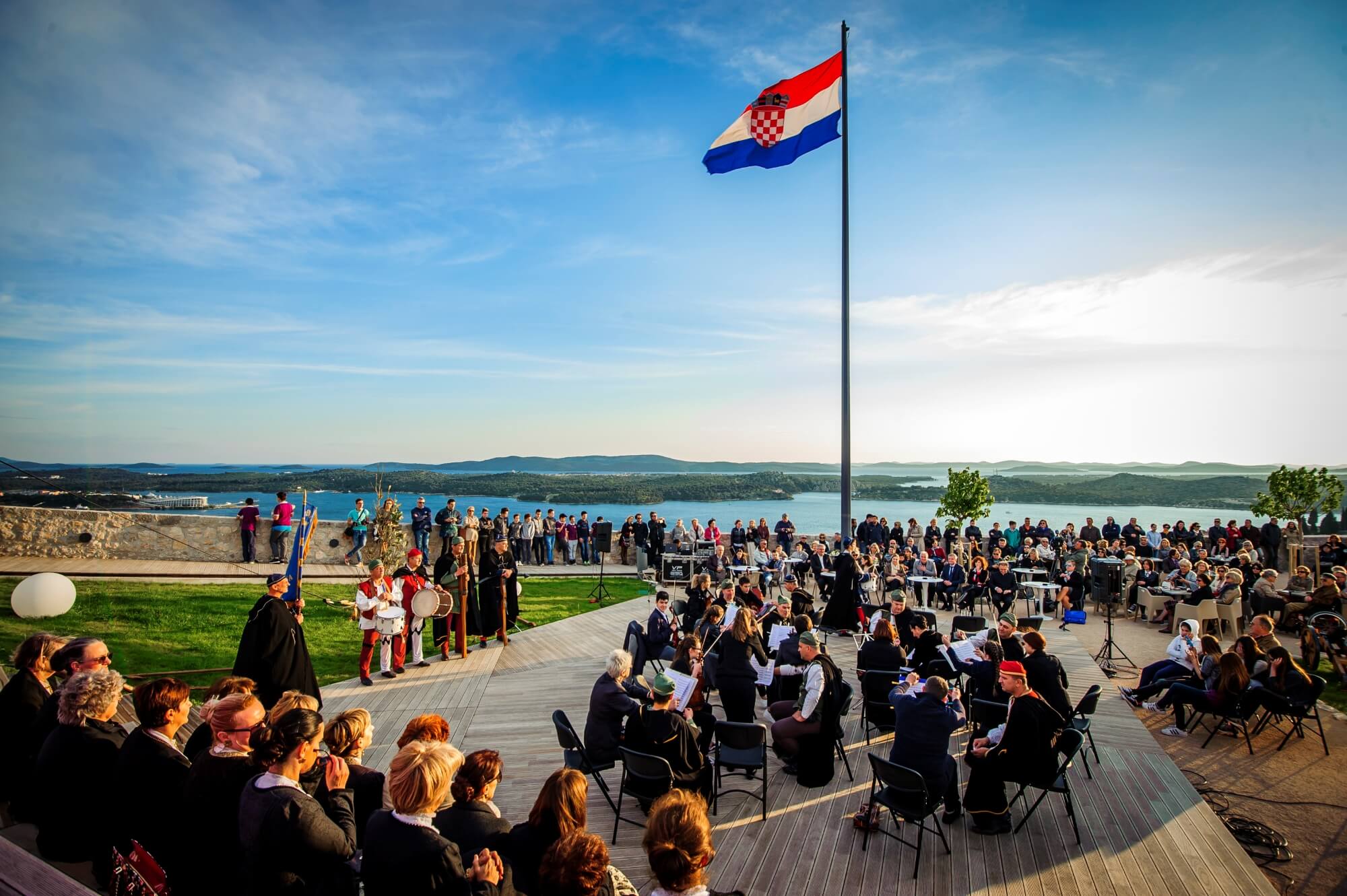
Šibenik's spectacular Cathedral of St. James is also a UNESCO heritage site. Understandably so. It's an architectural treasure. These five titanic landmarks are cornerstones of Šibenik Old Town. Its historic streets are among the most charming and atmospheric in Croatia. During warmer months, Šibenik's renowned music, children's, dance, theatre and cinema events spill out onto these streets.
Special gastronomy
 Inclusive Šibenik: Bakalar (salt cod), served traditionally with potatoes © Maja Danica Pečanić
Inclusive Šibenik: Bakalar (salt cod), served traditionally with potatoes © Maja Danica Pečanić
Šibenik has long been known for its classic Mediterranean brunches – marenda. For as long as anyone can remember, these simple yet tasty dishes have been enjoyed casually in the back streets and stone-paved alleys of Šibenik Old Town.
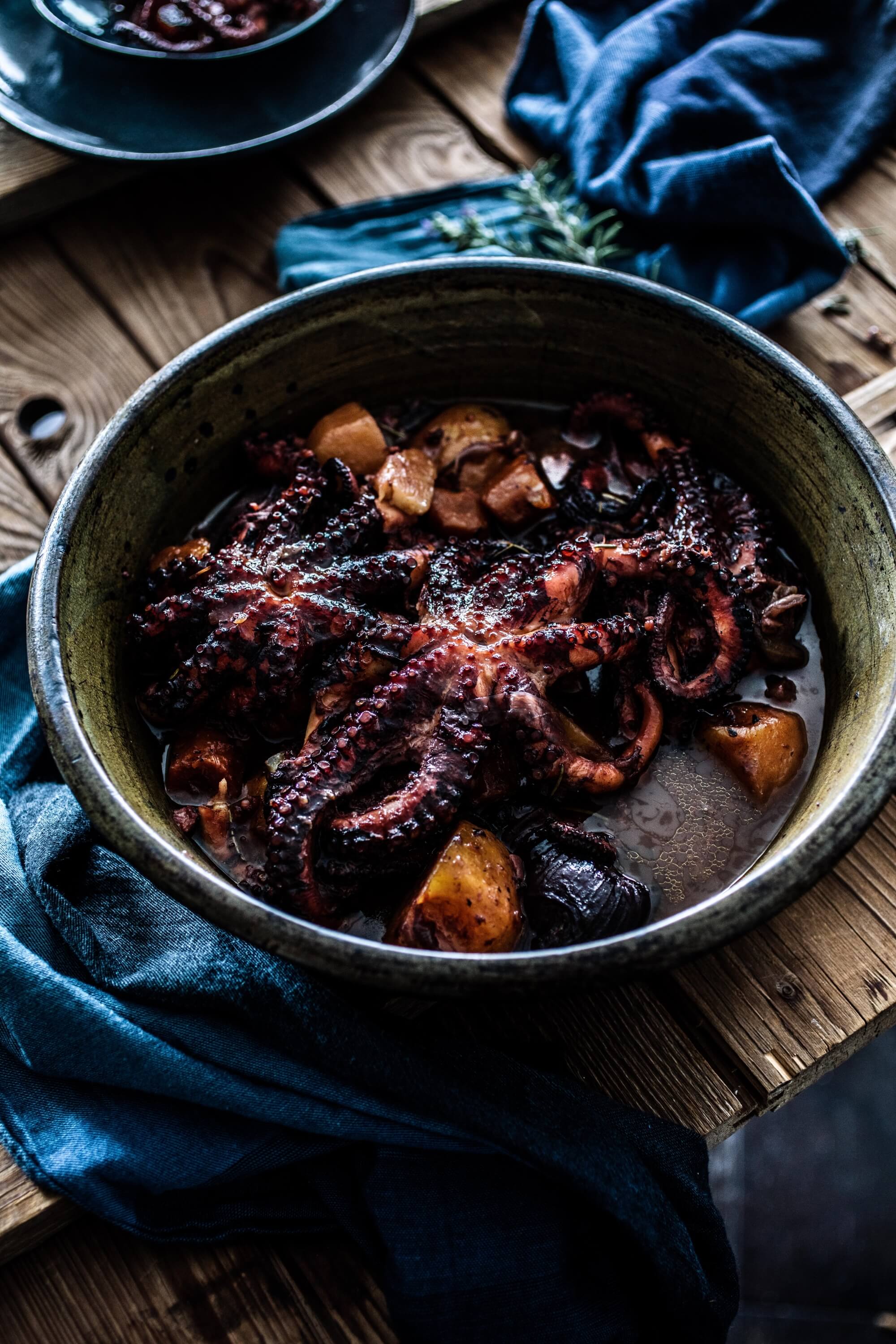 Inclusive Šibenik: Octopus © Maja Danica Pečanić
Inclusive Šibenik: Octopus © Maja Danica Pečanić
Consistently voted Croatian Restaurant of the Year, the international reputation of Šibenik restaurant Pelegrini received a boost in 2018 when it was awarded a Michelin star. Not only does it still hold the award, but its presence in the city has also helped raise the bar for fine dining throughout Šibenik's eateries.
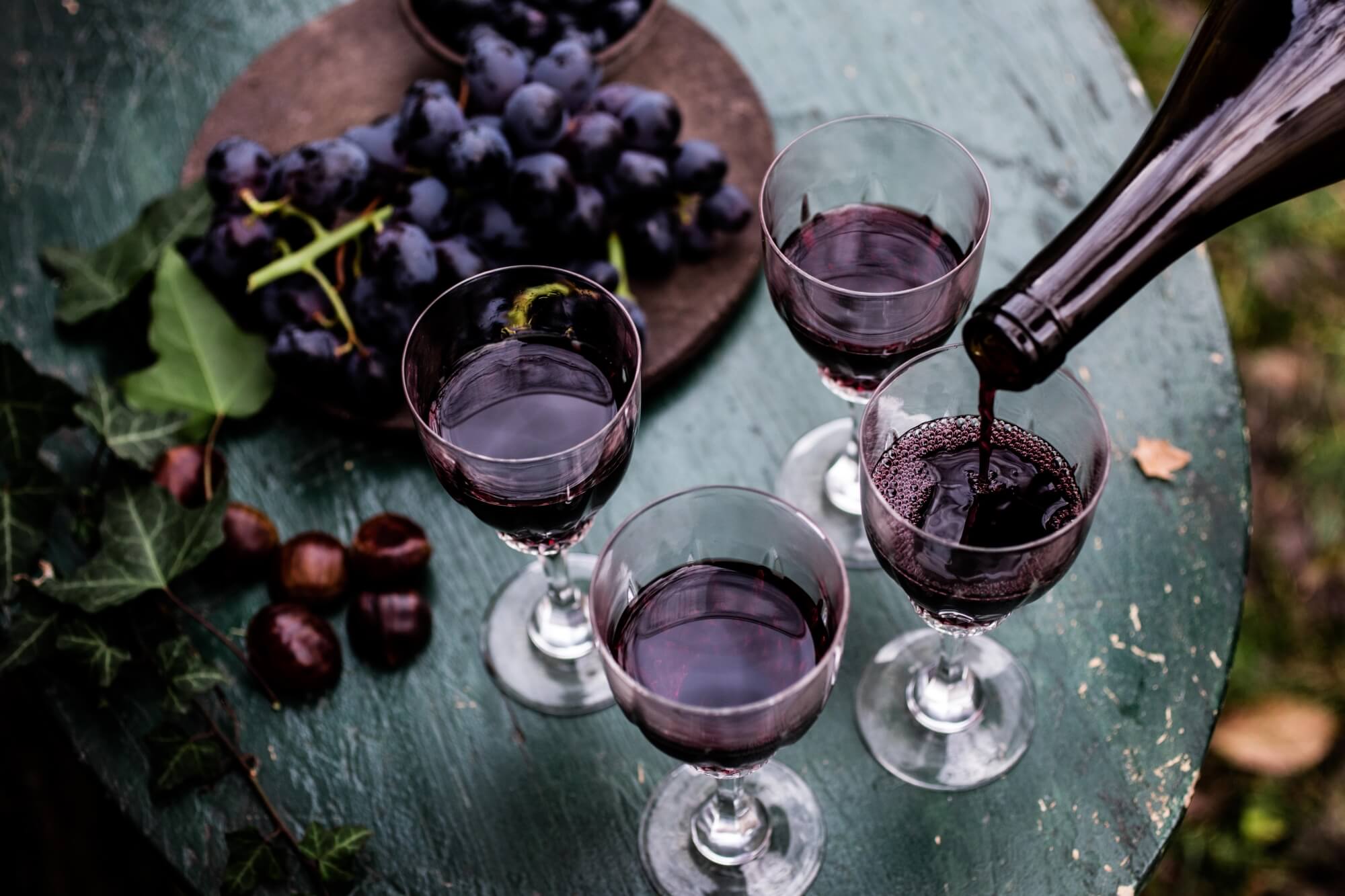 Inclusive Šibenik © Maja Danica Pečanić
Inclusive Šibenik © Maja Danica Pečanić
Furthermore, in the hills surrounding Šibenik, you'll discover some of Croatia's greatest small-scale wine producers. They might not be the most famous, but the winemakers of Šibenik-Knin County are consistently among the most highly decorated producers featured at elite international wine awards.
Landscape, nature and recreation
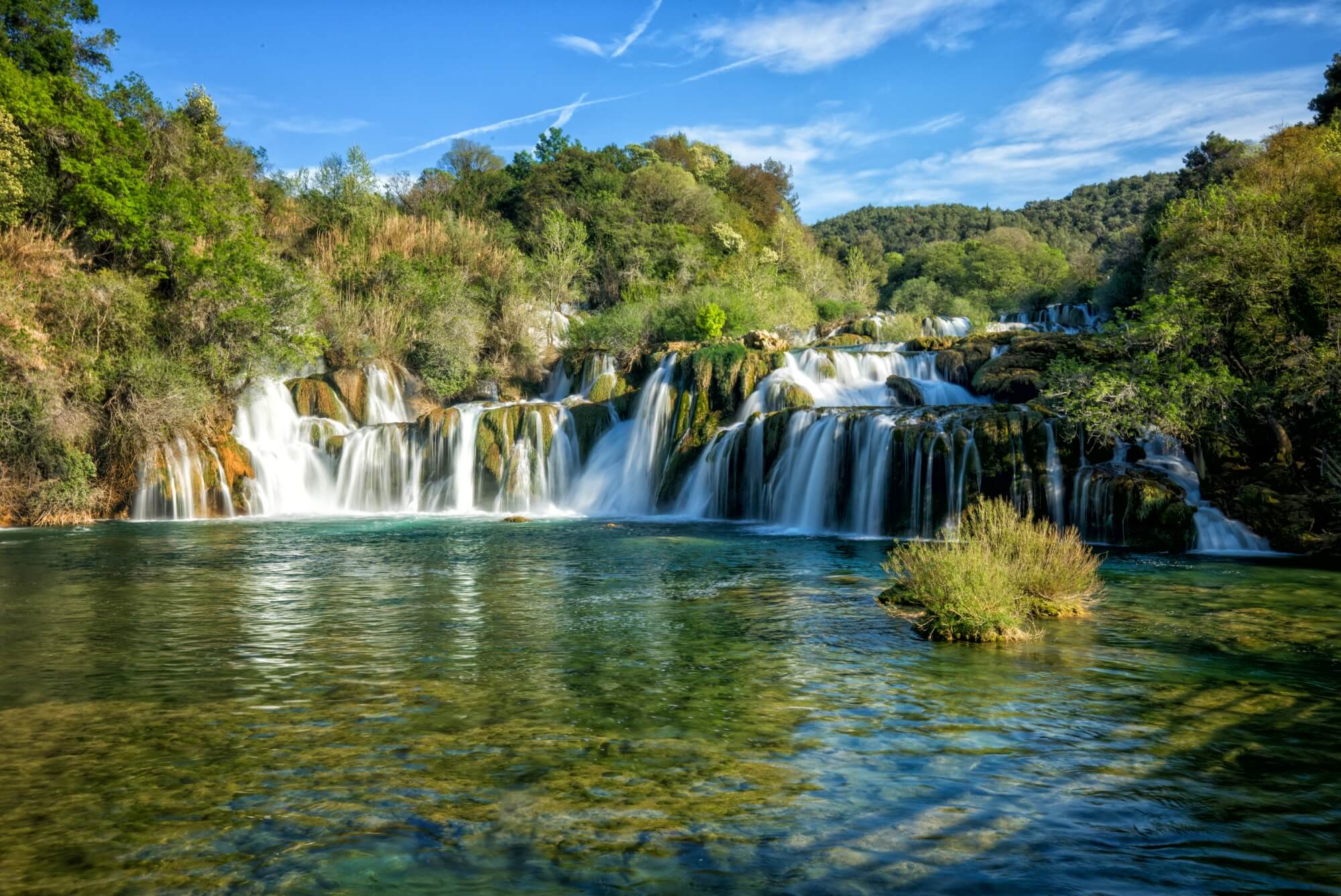 © Krka National Park
© Krka National Park
Few Mediterranean cities can boast natural assets like Šibenik's. And nowhere else looks exactly like this city.
Just 20 minutes drive from the town is Krka National Park. It is one of Croatia's most famous, most popular and most spectacular National Parks. Within 100 square kilometres of epic river valley, green wilderness and karst rock canyons, you'll discover seven spectacular waterfalls and a variety of birds and animals.
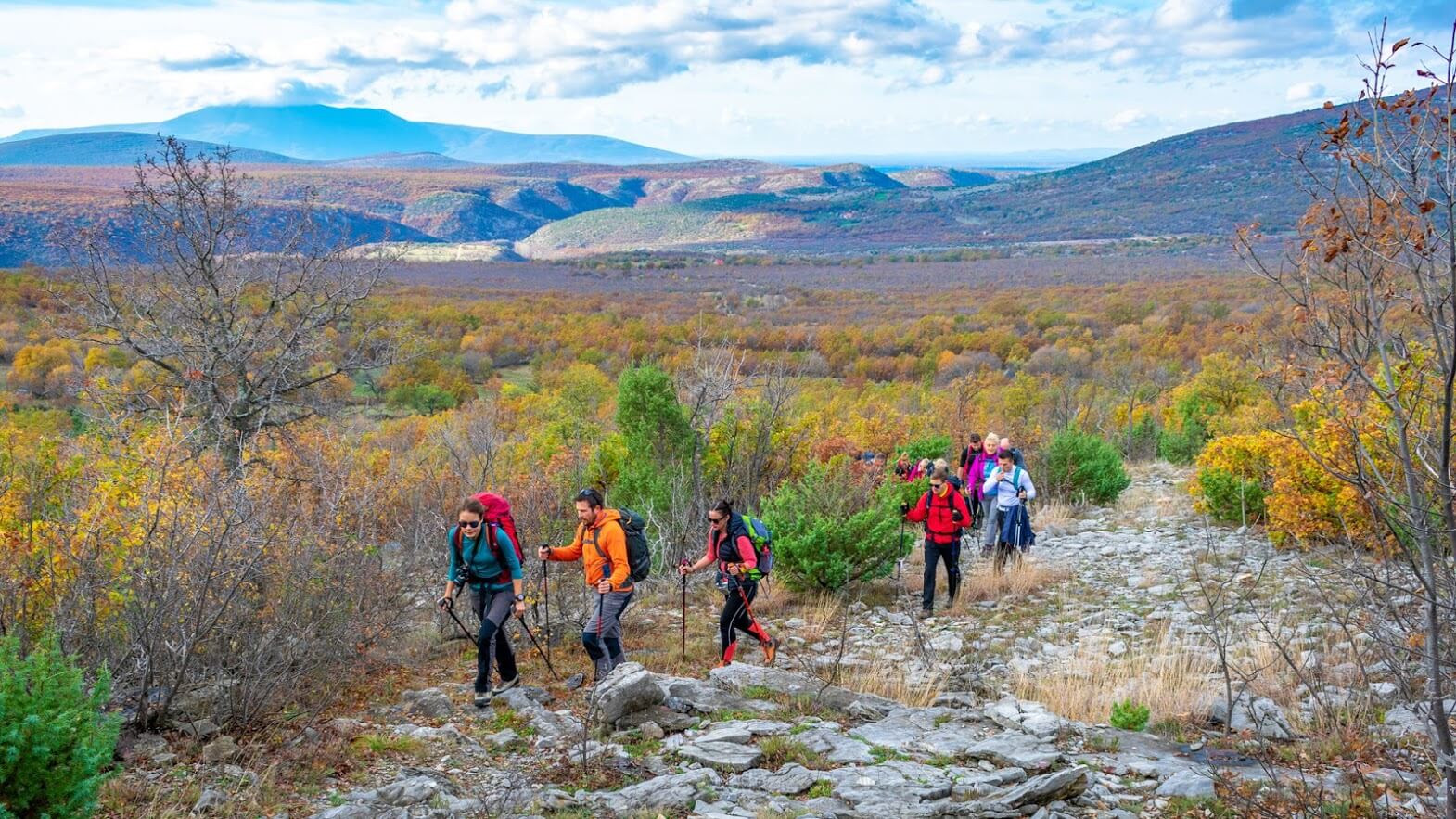 © Antonia Viljac / Šibenik Tourist Board
© Antonia Viljac / Šibenik Tourist Board
Closer to the city centre, St. Anthony's channel is a natural waterway that flows from Šibenik's sheltered harbour out to the open Adriatic. Running along the length of the channel's southern shore is one of Šibenik's best-loved areas of recreation. There you'll find St. Anthony's walking path and beaches with endless promenades.
Warm welcome
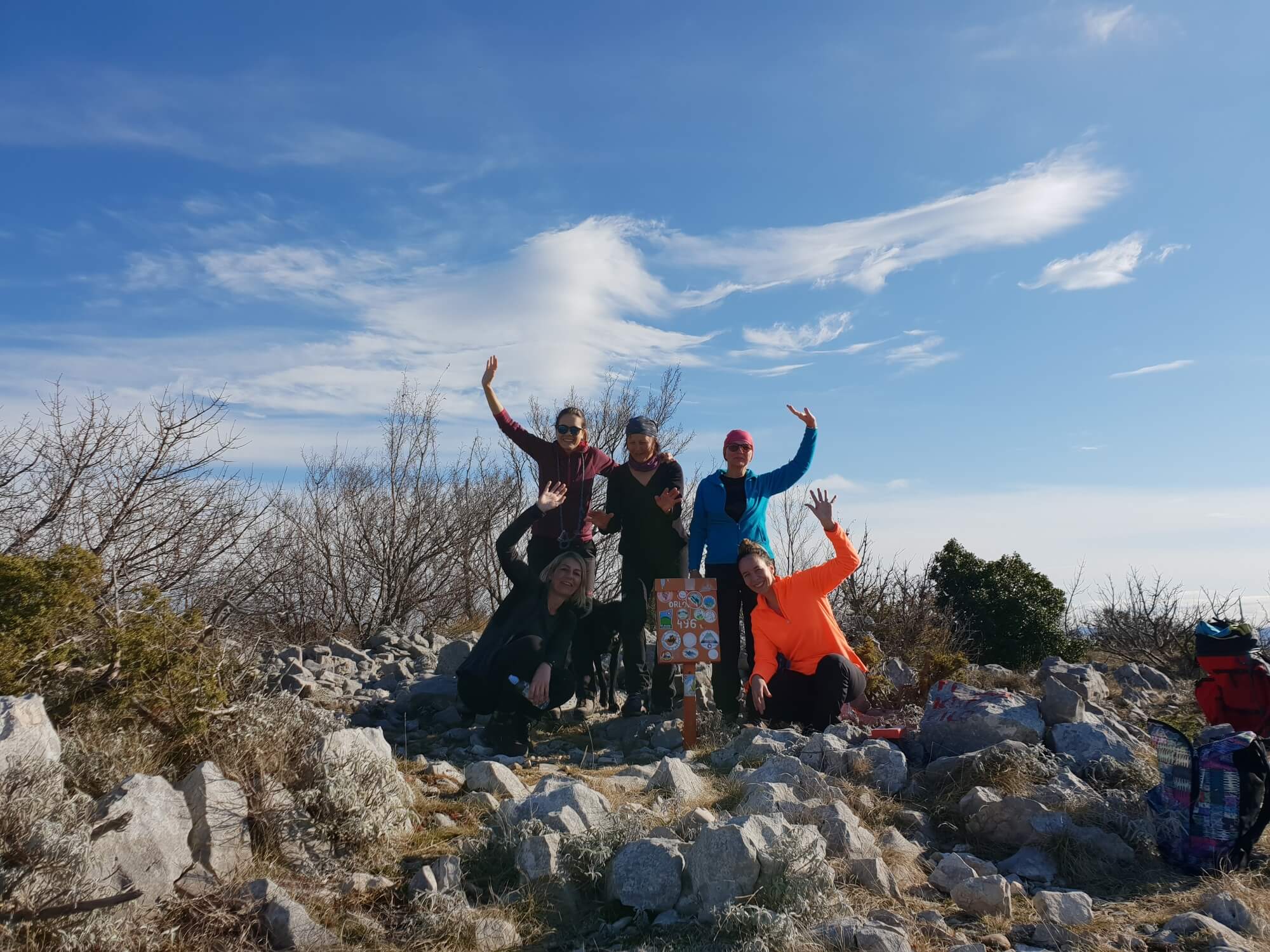 © Antonia Viljac / Šibenik Tourist Board
© Antonia Viljac / Šibenik Tourist Board
When talking about the distinct qualities of Šibenik, sooner or later you need to mention the welcome. Šibenik loves visitors. Šibenik residents appreciate nothing more highly than those who come to look and spend time here. That's why the city and Šibenik Tourist Board make a special effort to ensure Šibenik is accessible and a city for all. Recent EU project Tourism4all has helped to significantly improve Šibenik's ability to receive all visitors, including guests with disabilities and seniors.
Inclusive Šibenik History and Heritage: Fortresses and Old Town
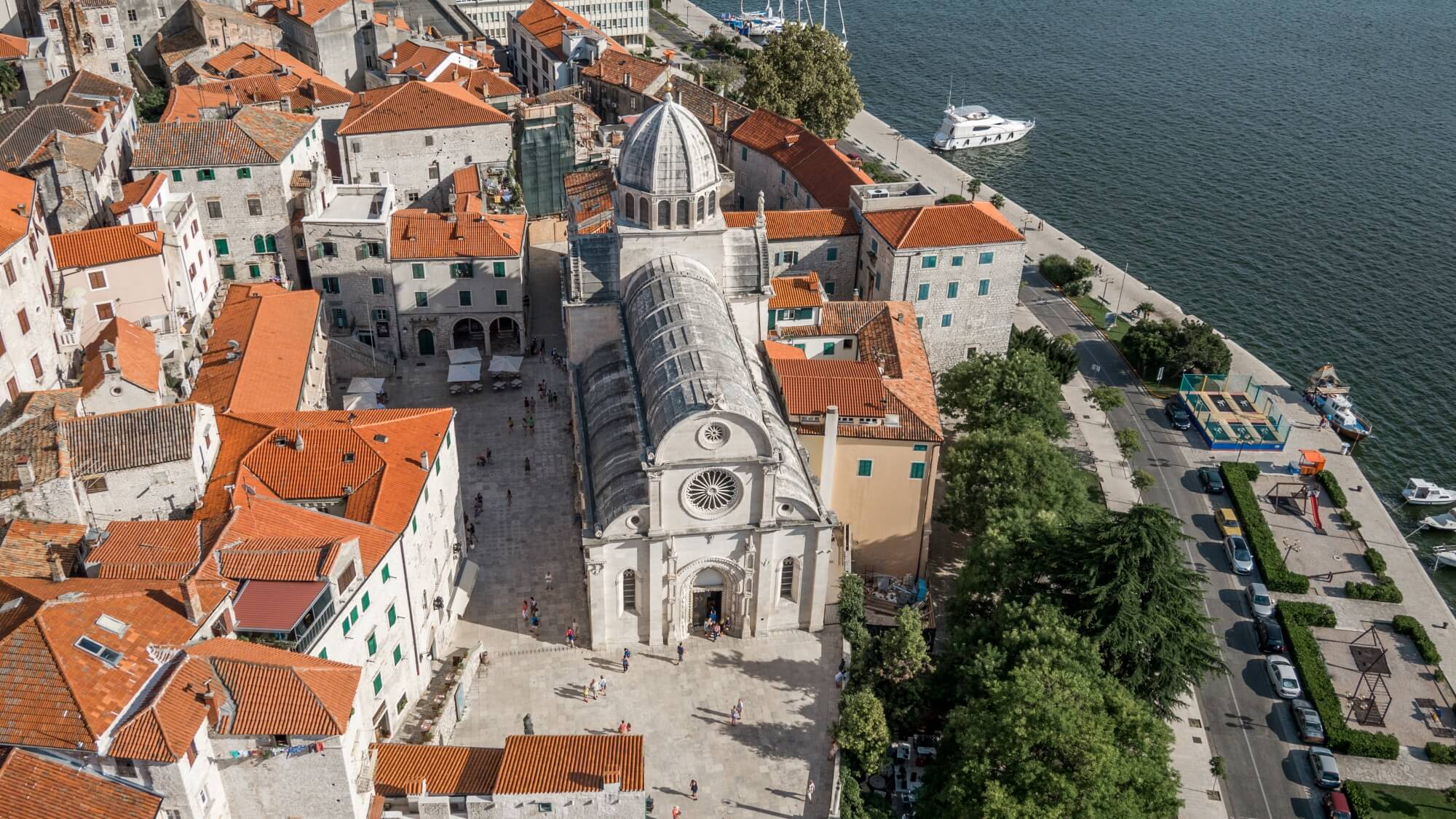 Inclusive Šibenik © Šibenik Tourist Board
Inclusive Šibenik © Šibenik Tourist Board
Šibenik Old Town wasn't designed with accessibility in mind. In fact, it wasn't strategically planned at all. Instead, the Old Town simply evolved over several centuries, rising up slopes when its expansion made that necessary. In total, there are over 2000 stairs and steps running through the Old Town. Charming to some, they are an obstacle for others. To help overcome those obstacles, Šibenik Tourist Board - with support from local associations of persons with disabilities - have mapped the accessibility of all the public buildings and tourist attractions. You can check out the map here.
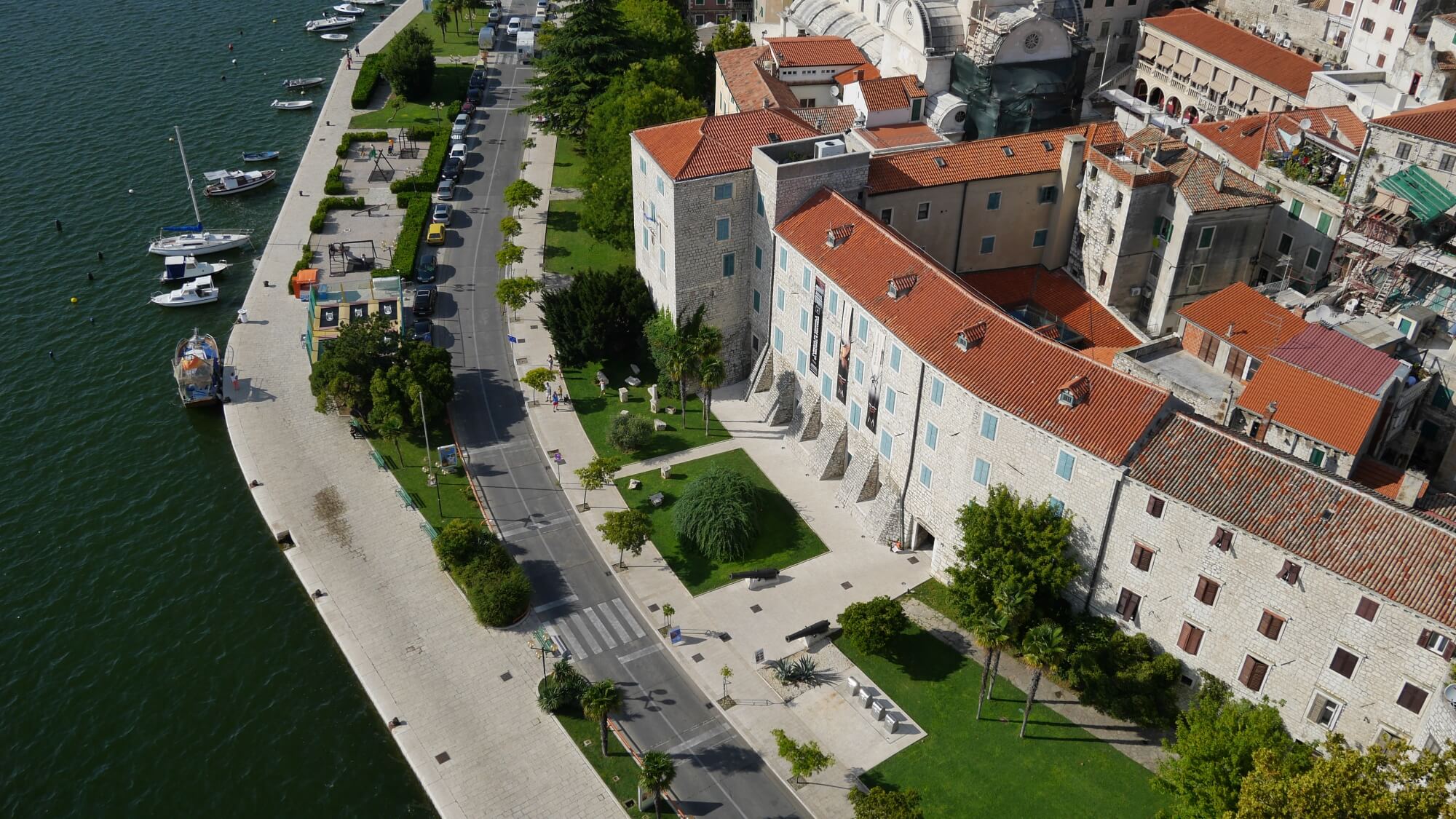
Experienced guides from the professional Association of Šibenik Tourist Guides Mihovil have recognised that, on average, at least one member of every guided tour group they lead has special needs. In response, they have invested time and effort to create tours adapted to the needs of persons with different disabilities. One additional tool that's been created to help visitors get around the city centre is a mobile phone app – Šibenik Audio Guide. It was designed with blind and partially sighted visitors in mind, although is useful for everyone. Šibenik Audio Guide is available in English, Italian, German and Croatian and is downloadable from Playstore and iStore.
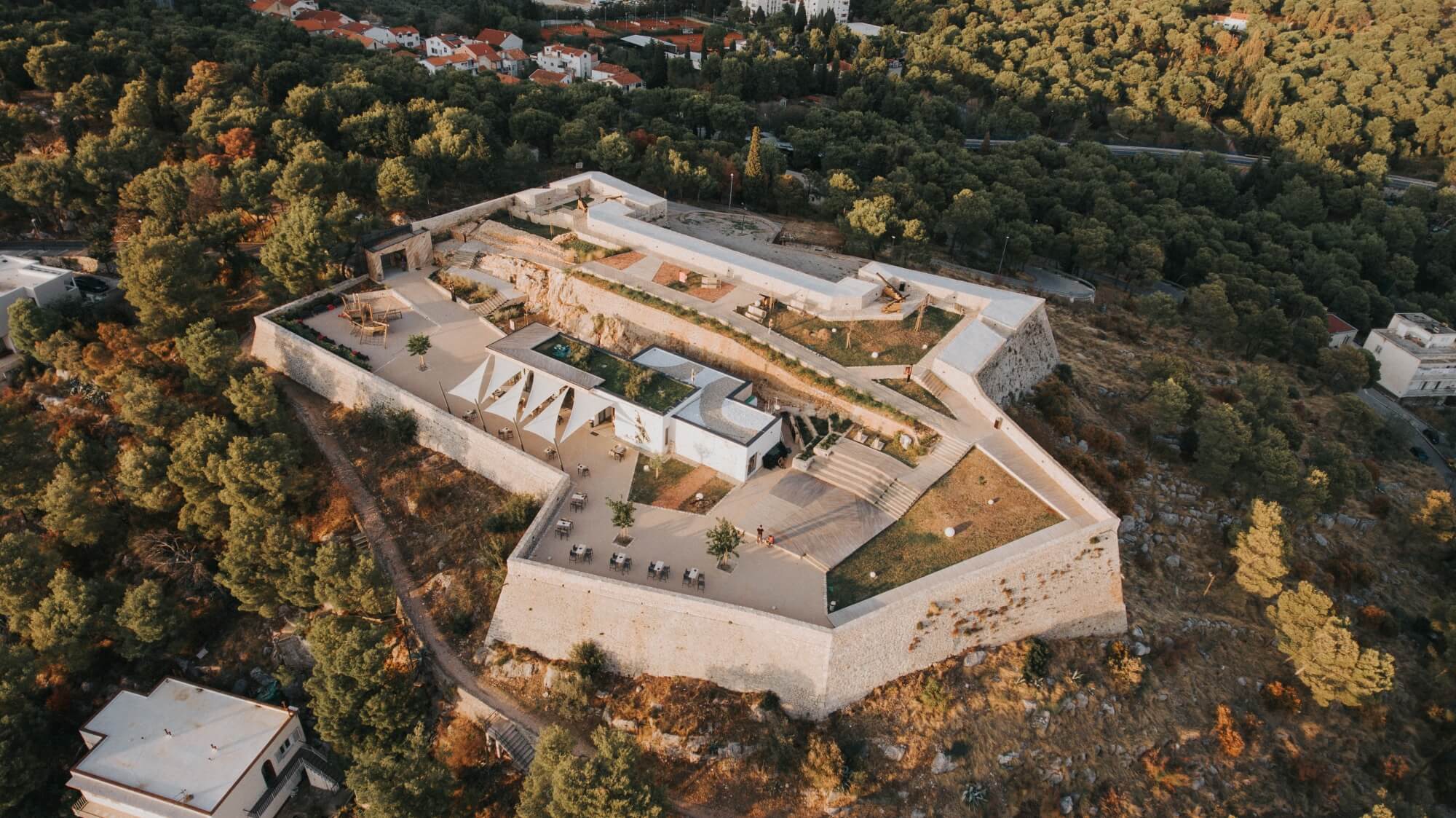 Inclusive Šibenik: Barone Fortress © Šibenik Tourist Board
Inclusive Šibenik: Barone Fortress © Šibenik Tourist Board
Further to these efforts, two of Šibenik's fortresses - St. Michael’s Fortress and Barone Fortress – have been reconstructed to be fully accessible to persons with disabilities. Inside the fortresses, you can learn how they helped defend Šibenik and more about the history of the city itself. One of the most breathtaking events spaces in Croatia, there's a spectacular backdrop of city, nature, sea and islands to performances at St. Michael’s Fortress. All of its dance, theatre, music and film events are fully accessible.
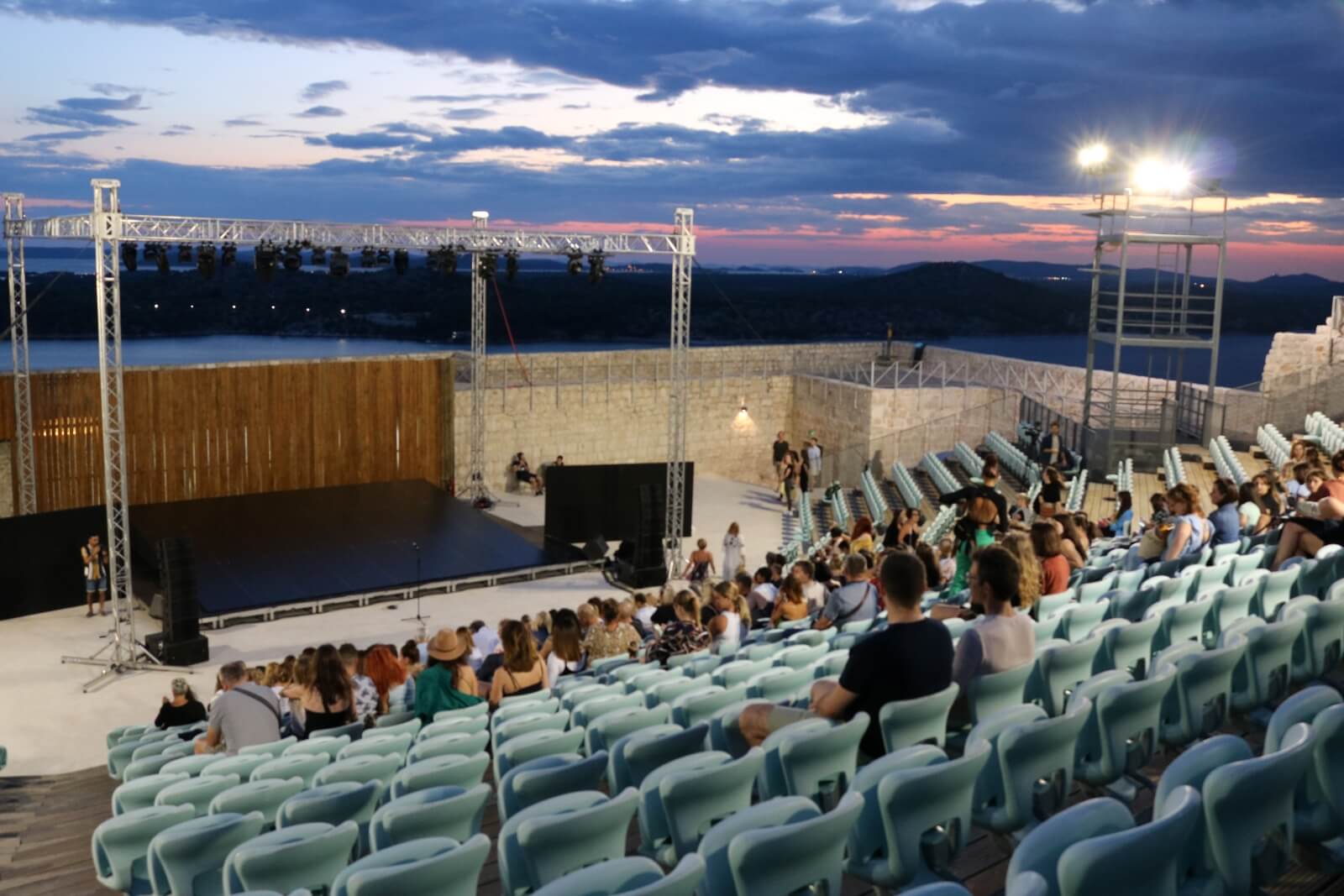
The Tourism4all project has supported the introduction of transport services - a minivan that is equipped for the transfer of wheelchair users visiting the city. It is operated by local NGO Aurora.
Discover the Šibenik food and drink that's right for you
 Inclusive Šibenik: Brudet © Maja Danica Pečanić
Inclusive Šibenik: Brudet © Maja Danica Pečanić
Within recent memory, many places in Croatia struggled to cater for the growing number of vegetarian and vegan guests arriving at their destinations. But, great advances have been made over the last decade. Nowhere more so than the city of Šibenik, where you can access a food map specifically designed for those with food intolerances or distinct dietary needs.
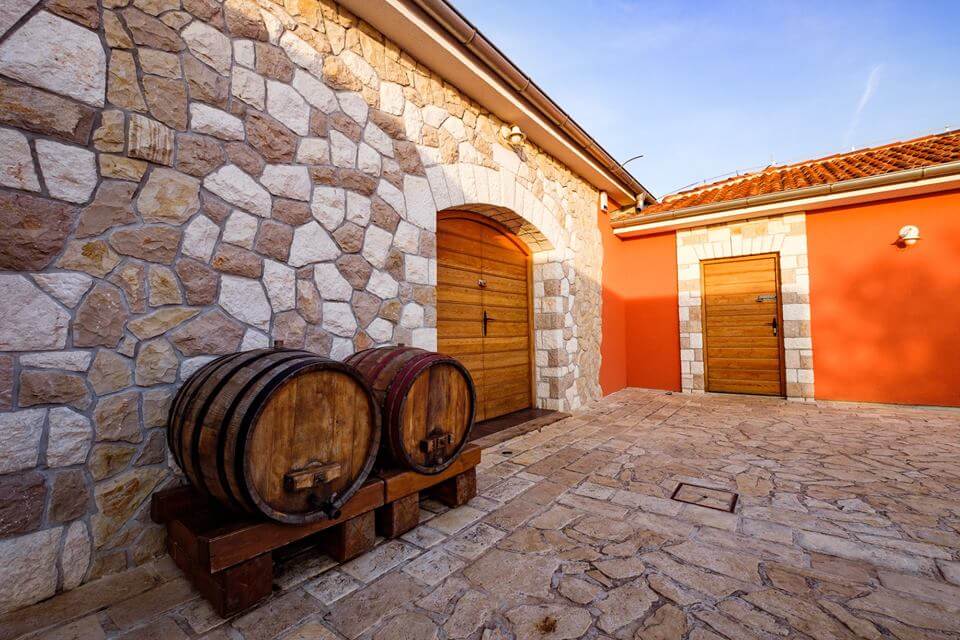 © Baraka winery
© Baraka winery
Want to discover more about local food and the celebrated wine of Šibenik-Knin County? Baraka winery, just outside the city, is surrounded by vineyards and olive trees. Their new cookery classes have been designed to be accessible to all and are perfect for small groups. You'll learn to cook local dishes using ingredients popular to the region. Then, you'll enjoy lunch or dinner in these beautiful natural surroundings.
Inclusive Šibenik Nature, Wildlife and Recreation
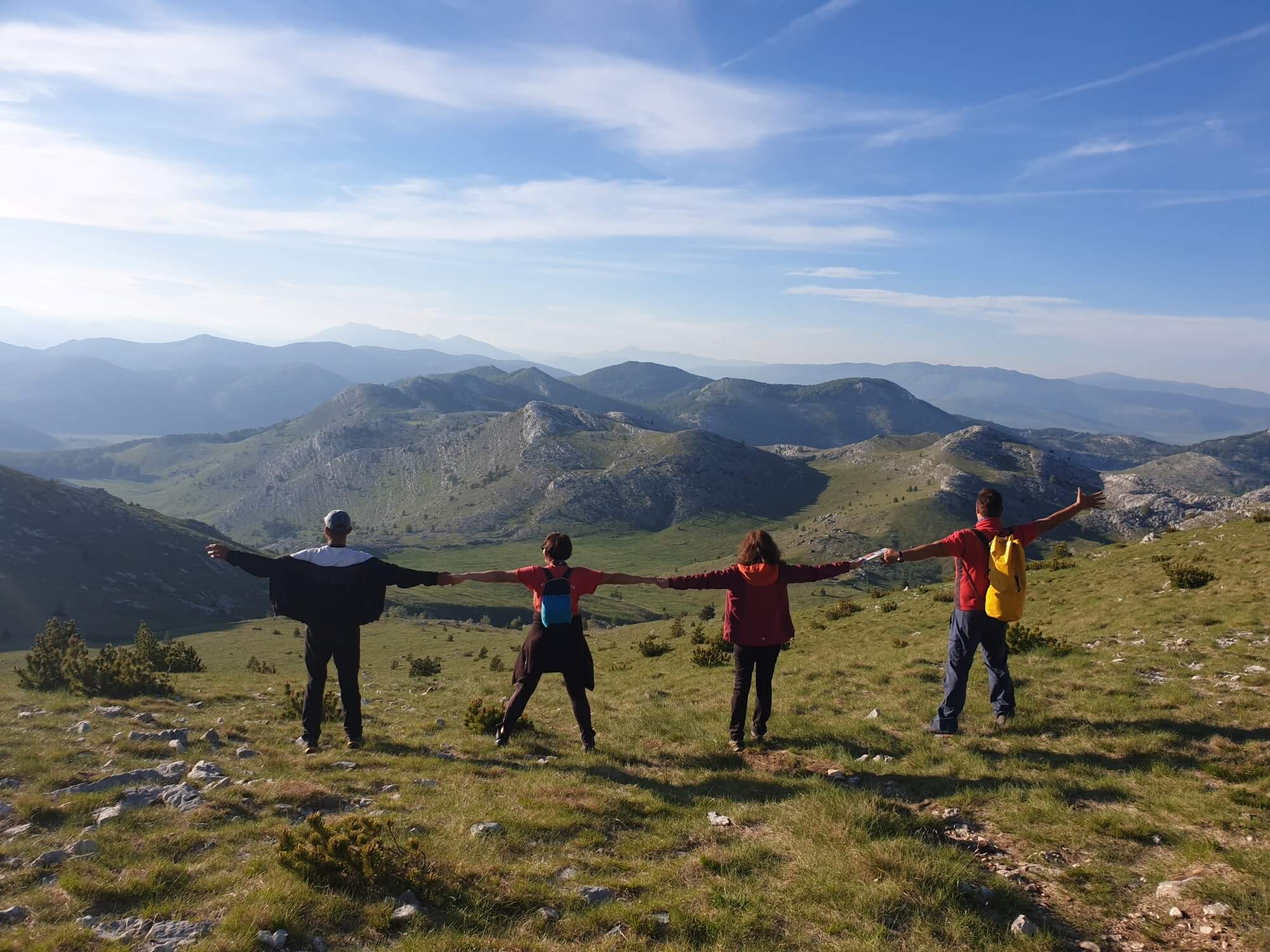 Inclusive Šibenik © Antonia Viljac / Šibenik Tourist Board
Inclusive Šibenik © Antonia Viljac / Šibenik Tourist Board
The nature surrounding Šibenik is spectacular. Whatever your abilities or level of fitness, this nature can be enjoyed by all. Sections of Krka National Park with broad accessibility are specially designated by park authorities.
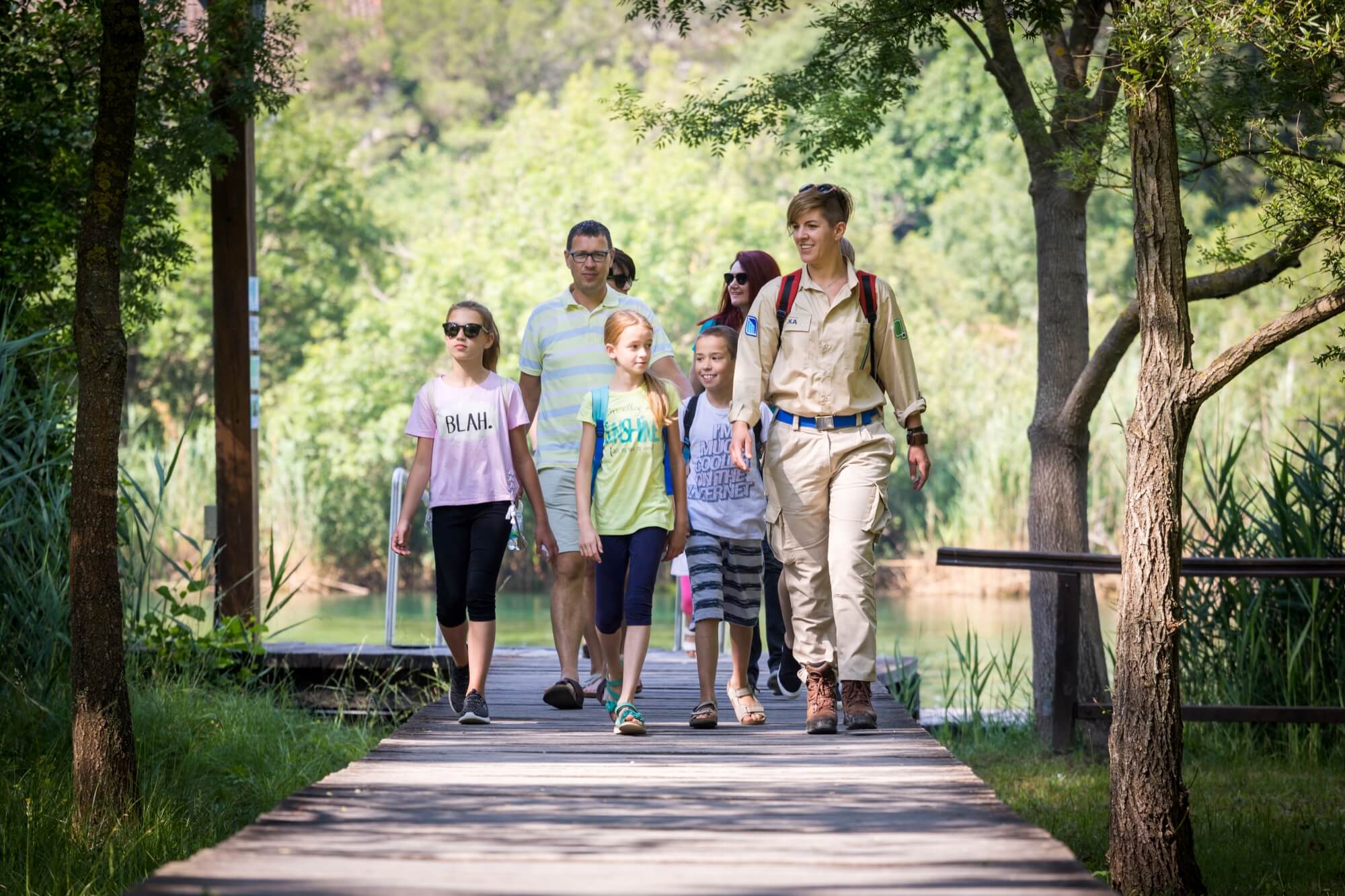 Inclusive Šibenik: Krka National Park
Inclusive Šibenik: Krka National Park
There are numerous walks and hikes across the cityscape that are designed for people of all ages and abilities. Family groups with several different generations can enjoy untaxing strolls around St. Anthony's channel. Above the city, Šubićevac Forest Park has a fully equipped playground area, designed for inclusiveness and accessibility. You'll get incredible views from both these places.
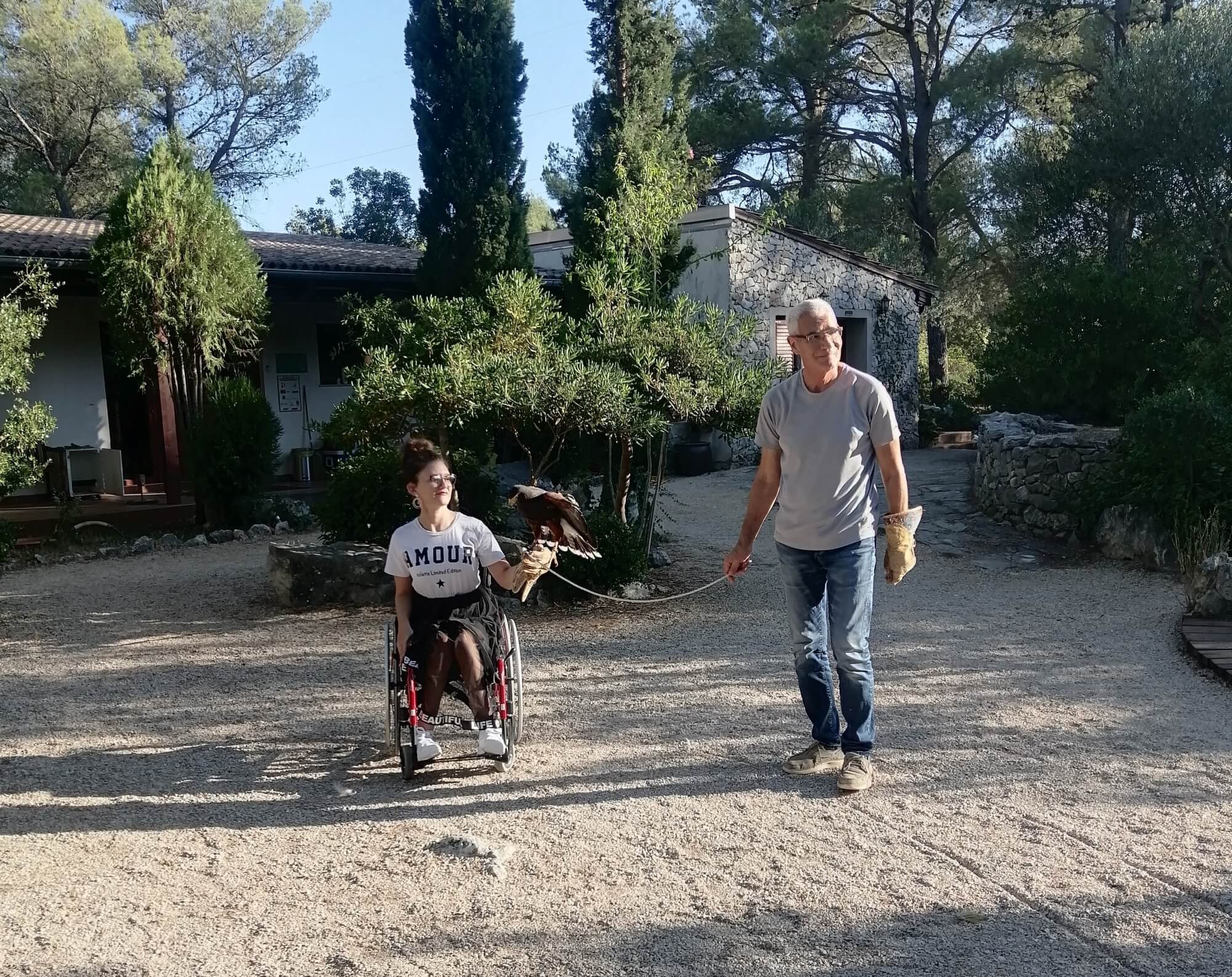 Inclusive Šibenik: Dubrava Falconry Center © Šibenik Tourist Board
Inclusive Šibenik: Dubrava Falconry Center © Šibenik Tourist Board
If you want to get up close to some of the animals that live in this area, then there are several options. Located in a dense pine forest less than 10 kilometres from Šibenik centre, at the Dubrava Falconry Center, you'll meet several different birds of prey.
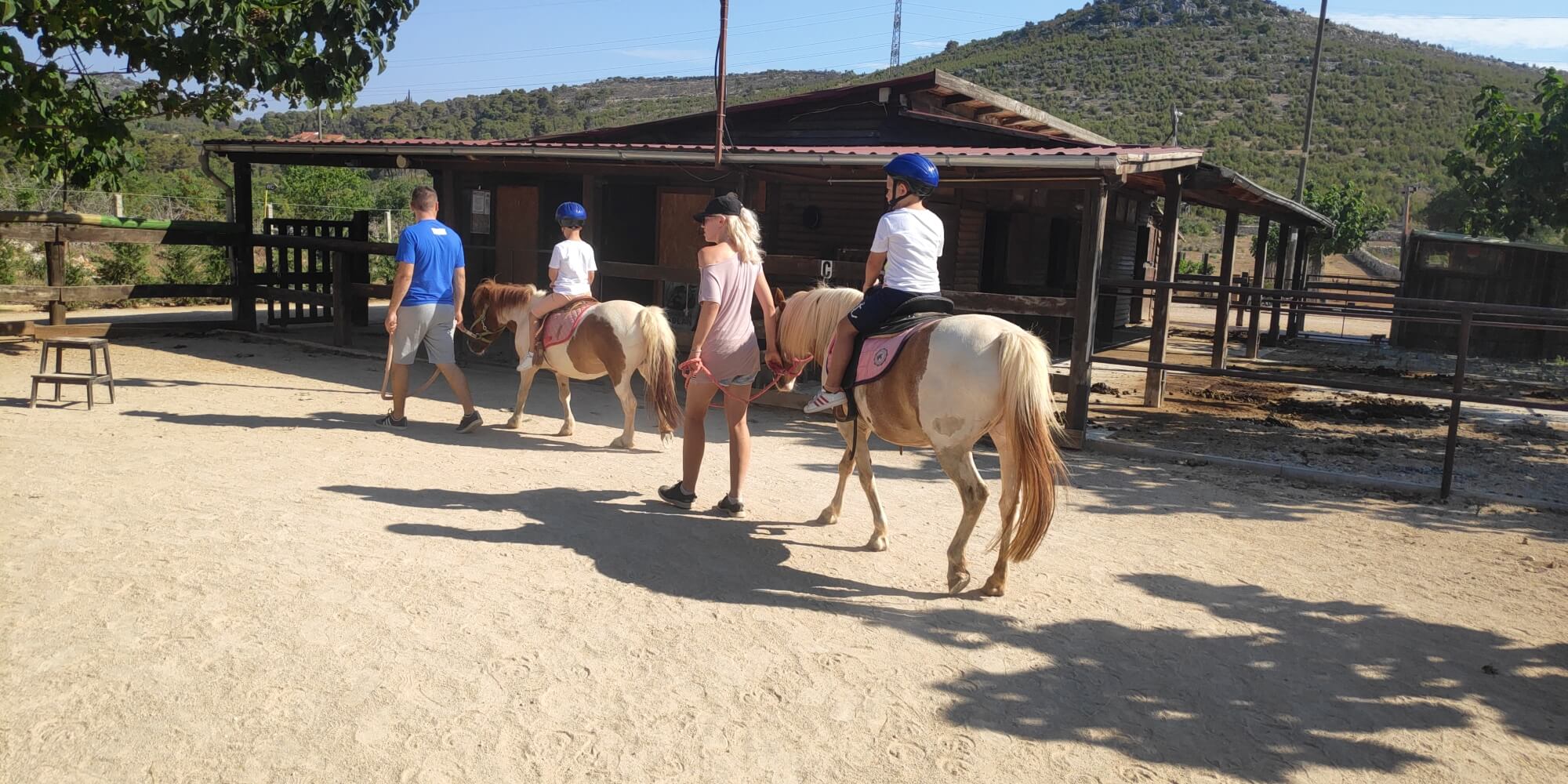 Inclusive Šibenik: KK Kolan horseriding club at Farma Happy Horse © S. Živković
Inclusive Šibenik: KK Kolan horseriding club at Farma Happy Horse © S. Živković
At Farma Happy Horse you'll meet horses and llamas. In fact, there's a range of domesticated animals waiting to greet you on this small family farm. They're all very friendly. Also, horse riding club KK Kolan operates on the farm. Their experienced team offer specially designed therapeutic horse riding sessions for children and teenagers with disabilities.
Accessible accommodation in Šibenik
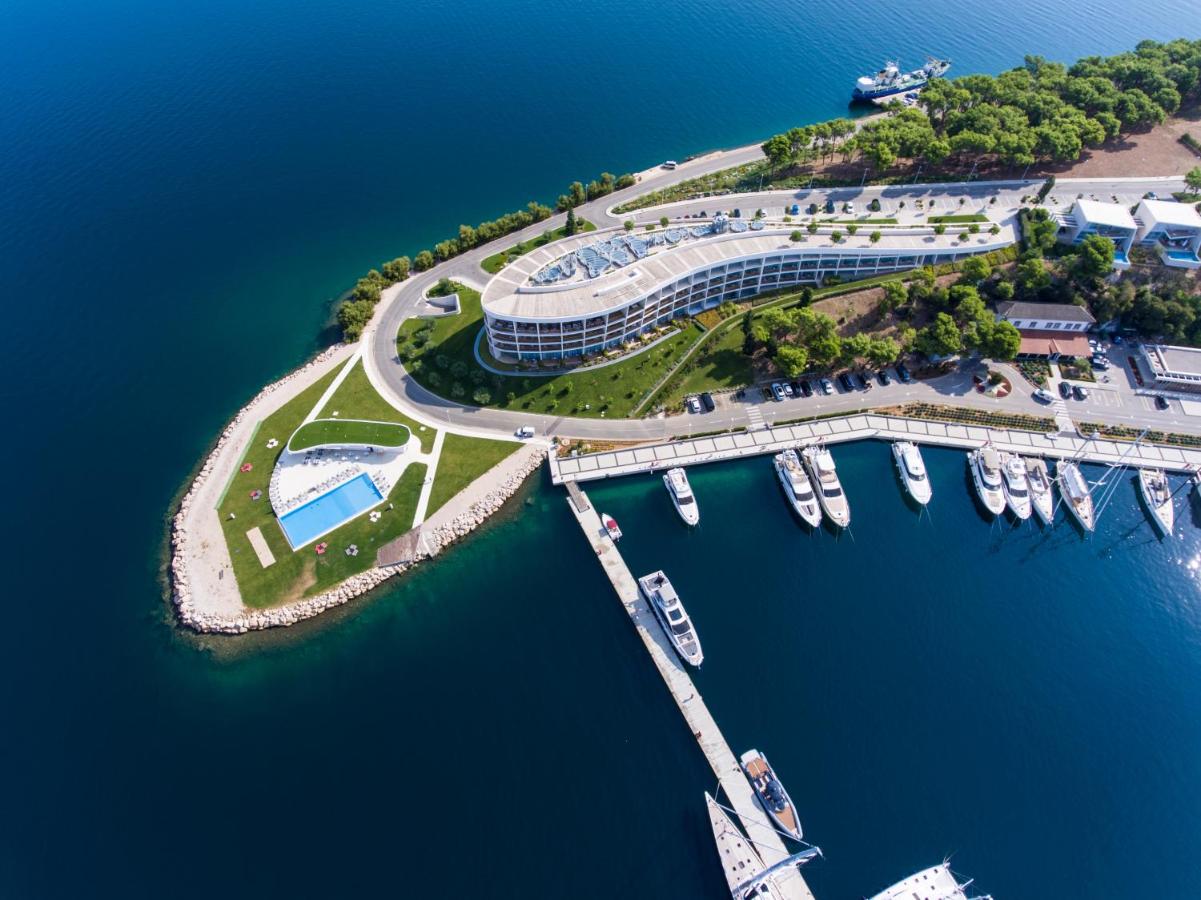 © D-Resort Šibenik
© D-Resort Šibenik
D-Resort is a modern hotel resort at the side of Šibenik marina. It sits at the very end of a small, thin peninsula that stretches into Šibenik bay. Its light and spacious rooms have balconies that look out onto the bay, the city and the nature opposite. The hotel has 4 bars and lounges and, just next door, a spa area. The hotel has appointed rooms designed to be accessible and specifically with disabled guests in mind.
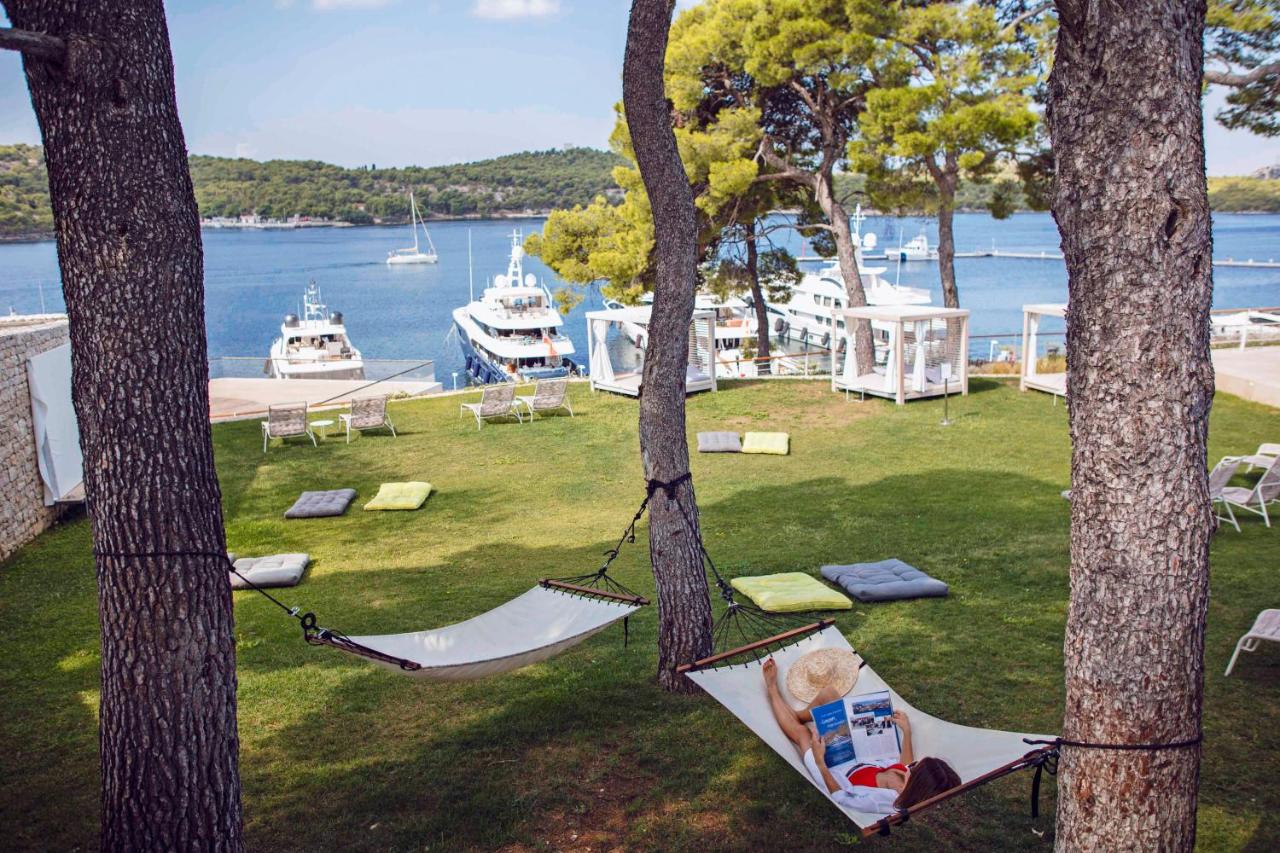 © D-Resort Šibenik
© D-Resort Šibenik
Visitors to Šibenik can take advantage of Šibenik Card and obtain various discounts, including 20% discount on accessible rooms at D-Resort. For more information about Šibenik Card, look here.
BBC Symphony Orchestra Plays Dora Pejačević, Croatia’s First Female Composer
Listen to the most famous works of Croatia's first female composer Dora Pejačević, performed by the BBC Symphony Orchestra and pianist Nataša Veljković
BBC Radio 3 recently featured three works of Croatian composer Dora Pejačević in their Radio 3 in Concert musical programme.
Named ‘Masterpiece Rediscovered’, this episode centers around Symphony in F sharp minor written by Dora Pejačević. It was broadcast live from the Barbican Hall and performed by the BBC Symphony Orchestra with conductor Sakari Oramo at the helm.
Symphony in F sharp minor op.41 is considered to be the first modern Croatian symphony and one of the most distinguished works of Croatia’s first female composer.
The programme also features another famous work of Dora Pejačević, the piano cycle Blumenleben op.19 (The Life of Flowers). Performed by pianist Nataša Veljković, the opus consists of eight individual pieces inspired by different flowers associated with certain stages of life.
Countess Dora was a member of the House Pejačević, an influential noble family who were based in Slavonia and counted high state officials, military officers and politicians among their ranks.
Born in 1885, Dora Pejačević first received piano lessons from her mother at their family residence in Našice. She went on to study music privately in Zagreb, Dresden and Munich, but considering that she never studied continuously for a longer period of time, she’s considered to have been largely self-taught.
She had written her first composition at the age of 12 and went on to compose 58 opuses with 106 compositions in total between 1897 and 1922.
Her piano concerto (1913) is the first concerto ever written by a Croatian composer.
Even though she’s known as one of the most notable Croatian composers of classical music and was a highly prolific creator, most of her work still hasn’t been published and given the recognition it deserves.
Tune in to listen to the Symphony in F sharp minor on BBC. The recording will be available until December 26th, 2021 and also features Ludwig van Beethoven’s Violin Concerto in D major and two works of British composer Edward Elgar.
Learn more about the family Pejačević and their two castles in Našice in this feature.
Gov't Continues to Strongly Support Slavonia, Says PM
ZAGREB, 2 Dec 2021 - The eastern city of Osijek marked its day on Thursday with a special City Council session at which Prime Minister Andrej Plenković said the government would continue to strongly support the region of Slavonia, Baranja, and Srijem through the policy launched five years ago.
He said that five years ago the government concluded that it was necessary to immediately do the utmost for the region's welfare and that that was the backbone of the policy for a region that was devastated by the Greater Serbia military aggression and which suffered major economic and population problems.
"We felt it was time to offer a strong hand of support to Osijek and Slavonia from the national level, and after five years of that policy, the results can be seen. It's visible that that policy was the right one and useful for citizens in all Slavonia counties, notably in Osijek-Baranja County, which is the engine of the modern development of all Slavonia."
Plenković recalled the many investment projects financed by the government and the EU.
They are all messages that we wish to make Osijek a real regional center of eastern Slavonia, a center of the academic community, culture, the economy, and modern technologies which will attract young people, he said.
He recalled that during the pandemic, government measures helped to save 17,000 jobs in Osijek, with 2,800 companies receiving HRK 242.3 million for wages in the private sector.
Plenković also said that Croatia's entry into the euro area would bring further investment.
Mayor: Biggest budget ever for the continuation of economic growth
Osijek Mayor Ivan Radić (HDZ) said the City Council recently adopted the biggest budget in the city's history, HRK 1.08 billion, and that it would facilitate the continuation of economic growth and development, the strengthening of the pre-school and school education system, the maintenance of the local infrastructure, and care for the most vulnerable groups.
He said a good absorption of national and EU funds was a priority for the realization of city projects, adding that funds from the National Recovery and Resilience Plan would also be tapped.
For more on politics, follow TCN's dedicated page.
ZSE Main Indices in Red Under Pressure from European Stock Exchanges
ZAGREB, 2 Dec 2021 - The main Zagreb Stock Exchange indices decreased on Thursday, the Crobex by 0.28% to 1,985 points and the Crobex10 by 0.30% to 1,217 points, following the losses on European stock exchanges in the wake of the new COVID-19 variant.
Regular turnover was HRK 6.27 million and another HRK 3.33 million was generated in block trading with Ilirija at HRK 170.
In regular trading, the most traded stock was Valamar Riviera, turning over HRK 1.9 million. It closed at HRK 31.1 per share, up 1.62%.
Thirty-nine stocks traded today, with 12 gainings and 16 losing in price, while 11 were stable.
(€1 = HRK 7.531682)
For more, check out our dedicated business section.
Holiday of Hanukkah Marked in Croatian Parliament
ZAGREB, 2 Dec 2021 - The Jewish holiday of Hanukkah was marked officially in the Croatian parliament on Thursday, by lighting the Hanukkah candles.
The event, organized by the Croatia-Israel interparliamentary friendship group, was attended by Parliament Speaker Gordan Jandroković, Israeli Ambassador Ilan Mor, Deputy Parliament Speaker Željko Reiner, and the head of the Croatia-Israel interparliamentary friendship group, Marijana Petir, who lit the candles.
Jandroković said he had witnessed the development of the Croatia-Israeli relations since the early 1990s, when, he said, "we did not understand each other so well", to the present day, when "those relations are the best ever, based on friendship and partnership."
We have achieved a high level of understanding for mutual values and our place in international relations, Jandroković said, adding that the two countries share the same views on many global and international challenges.
We belong to the Judeo-Christian civilization that shares, to a large extent, the same or similar values, and I am confident that in the time to come to Croatia and Israel will build even stronger ties because the world today is such that we must look for friends and allies, for partners which we can rely on. Croatia has demonstrated that position to Israel on a number of occasions and vice versa, and I am confident that we will continue doing so in the future, said Jandroković.
Ambassador Mor said that the holiday of Hanukkah symbolized dedication, and that connected with it was a legend of the miracle of light that burned in the Temple for eight days even though there was only enough sacred oil for one day's lighting. Therefore eight candles are lit on a menorah to symbolize eight days that celebrate the rededication of the Temple, he said.
Ambassador Mor said that he considered it a great honor that a Hanukkah candle would be lit in the Croatian parliament, which he described as yet another proof of the friendship between the two countries that share the same values.
The holiday of Hanukkah is marked at the time of preparations for the holiday of Christmas, which confirms how close our two religions are, the ambassador said, offering his best wishes for Christmas and the New Year.
The Hanukkah menorah is traditionally lit every evening during the eight-day holiday.
For more on politics, follow TCN's dedicated page.
Minister: Croatia Still Not Mulling Mandatory Vaccination Against COVID
ZAGREB, 2 Dec 2021 - The idea of compulsory vaccination against coronavirus is not yet on the government's agenda, however, anti-epidemic measures will depend on the epidemiological situation, Croatian Health Minister Vili Beroš said on Thursday.
The minister did not rule out the possibility of the fifth wave of the pandemic hitting Croatia if the country failed to reach the necessary vaccination rate.
"We have been emphasizing all along that vaccination is voluntary, and we have not considered the vaccination mandate. Since the onset of the pandemic we have been saying that all the measures are on the table and that epidemiological developments shape our choice of the measures," Beroš told a news conference after the government's meeting today.
He recalled that in Europe there are warnings that if a certain vaccination rate is not achieved, the fifth wave of the pandemic is possible in February.
"No one can know what awaits us so I cannot completely rule out the introduction of mandatory vaccination," Beroš said, admitting that mandatory vaccination could deepen the divisions in society and provoke resistance.
"Therefore, let us get vaccinated to deter a possible fifth wave and the emergence of new variants (of the virus)."
Croatia has seen a decline in new coronavirus numbers over recent days, which the minister associated with more and more people getting inoculated and with the introduction of the COVID certificate mandate.
Although he expressed hope for a more serene Christmas season, the minister called for exercising caution.
As for the inclusion of his name on the "Croatian Traitors" website, Beroš said that he felt extremely bad about it.
"Every single move and decision we make... is aimed at protecting the health of Croatian citizens. Anything else is bad stories that will be judged by history," the minister said.
For more on politics, follow TCN's dedicated page.
For all you need to know about coronavirus specific to Croatia, make sure to bookmark our dedicated COVID-19 section and select your preferred language.


